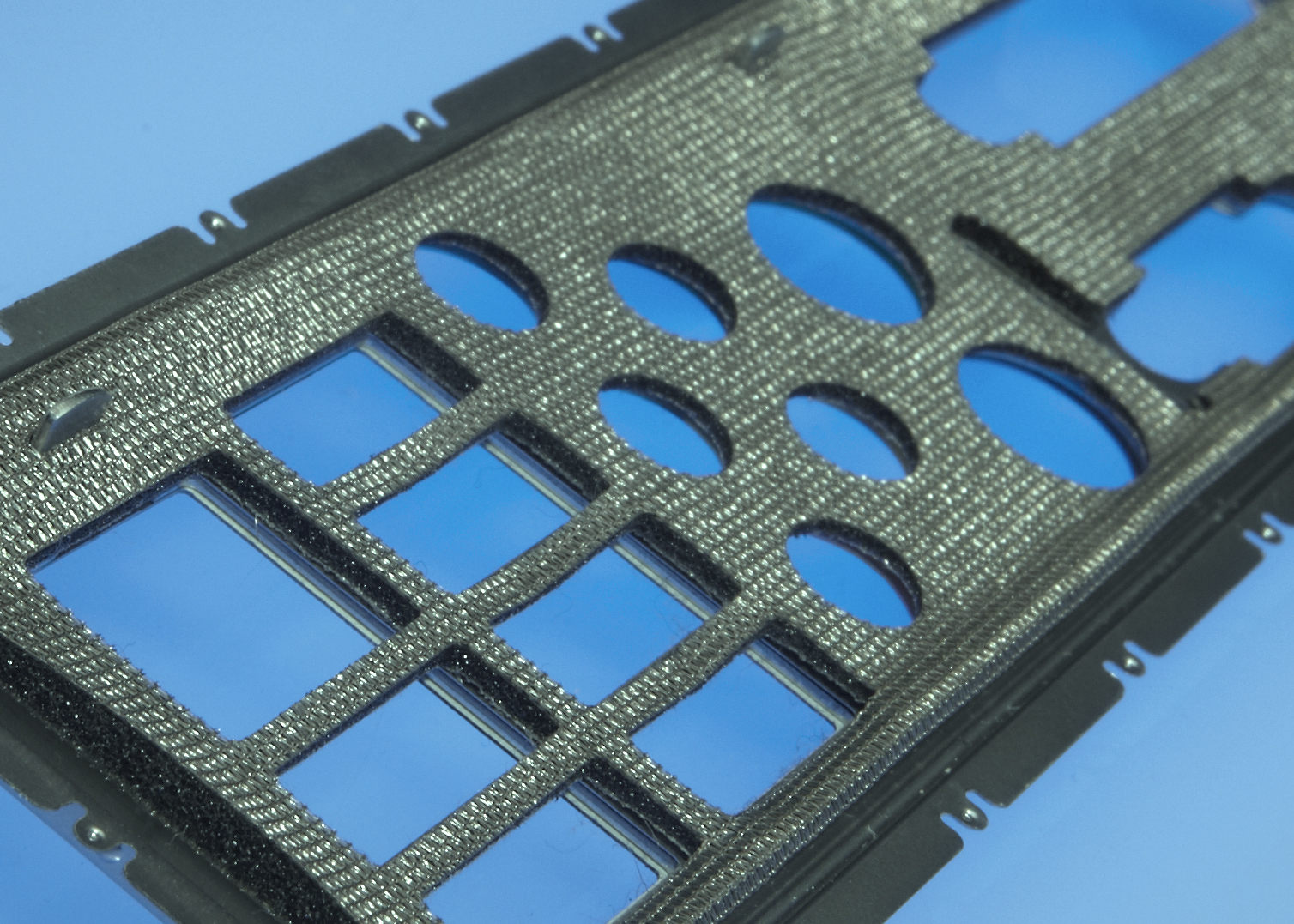How Innovation in Shielding and Grounding Materials Makes Miniaturization of Electronics Possible
Engineering new materials and methods for controlling electromagnetic interference plays an important role in the evolution of electronics. Machines that once filled rooms now fit in the palms of our hands, around our wrists and even slip onto our fingers. The major factor in miniaturization is shrinking components.
As the proliferation of electronic devices across the world continues, manufacturers and consumers are demanding more capability from ever smaller devices. Just as in the past, the future of miniaturization will rely on small innovations in materials and designs. Exploring how shielding and grounding materials are applied in current Polymer Science products helps foreshadow this future.
The Role of Electromagnetic Interference (EMI)
EMI shielding protects signals within devices from being disrupted by external electromagnetic shielding. In the case of conventional automotive design and electric vehicles, there are many electronic components that require shielding and grounding. Within tight designs like vehicle display screens, smartphones and consumer electronics, preventing generated signals from interfering with nearby, sensitive components requires engineering and often benefits from unique materials like silicone, polyamide films and other polymers.
Polymers in Shielding and Grounding
Metals and alloys are highly conductive, but the weight and size requirements of many of these materials often no longer suit smaller housings. Polymer Science is able to solve problems for manufacturers with our wide range of P-SHIELD® materials. EMI shielding of lightweight polymers includes using intrinsic conductive polymers and can be formulated to include metal-containing composites and filler-containing polymers.
Generally, polymers have three key characteristics that benefit shielding and grounding in miniaturization including multipurpose function, high flexibility and lightweight qualities. Intrinsically and extrinsically conductive polymers are now being used, including formulations of film tapes, foil tapes, foams tapes and other conductive materials. These materials offer lower weights and minimal material requirements within shrinking consumer electronics like tablets, smartphones and wearables. In applications like advanced batteries, electric vehicles (EV) and aerospace where reducing weight and size improves performance, these materials are rising in use.
Polymers as Multi-purpose Materials
When one material can be used to replace the functions of multiple materials, the overall volume of the finished product can shrink. Conductive foams are a primary example of how materials can be utilized to serve multiple functions. Silicones, polyurethanes, polyolefin and other elastomers are natural electrical insulators. Both conductive foam tapes and non-adhesive foams are ideal for converting with high conductivity in X, Y and Z axes. Laminating an extremely thin material like copper foil further enhances the conductivity of these materials. The multi-purpose function of these foams includes absorbing shocks, deadening noise pollution and tolerating heat. These qualities are highly beneficial within electric vehicles, smartphones, wearables and other electronic devices. When applied as a gap filler within device housings, conductive foams manage interference and protect sensitive components.
Another example of dual-purpose materials in EMI shielding and grounding applications are film tapes. Polymer Science’s P-SHIELD® film tapes enable devices to meet electromagnetic compatibility requirements. The additional qualities of resisting chemicals, waterproofing and light blocking fulfill the requirements of manufacturers in one thin, lightweight material.
High Flexibility of Polymers
Beyond multi-purpose, many polymers are highly flexible. For instance, anisotropic polyimide film with conductive acrylic PSA is thin, flexible and static dissipative. This film is extremely thin and highly flexible to fit the smallest device designs. Resisting corrosion, conductive films are not simply flexible but they’re also durable for long-lasting solutions.
Combining flexibility with strength is often difficult to accomplish with thin materials. Electrically conductive fabric provides both qualities. This material is therefore useful as both a tape and air loop. The thin profiles conform to irregular surfaces and the strength of the fabrics will not tear on edges and corners. As a grounding material, conductive fabrics help control cables across harsh surfaces allowing designs to shrink without sacrificing performance or longevity.
Beyond the active definition of flexibility, conductive polymers can be formulated to suit customized solutions. For example, adhesives can be modified to suit manufacturing processes. An acrylic pressure-sensitive adhesives will suit some applications while the use of heat-activated adhesives are preferred for other manufacturing needs. A heat-activated adhesive is dry at room temperature, conforming easily during assembly and forming a solid, durable bond when heat is added.
Benefits of Lightweight Materials
Thin profiles of materials like foil and film benefit miniaturization in clear ways. Thin materials require less volume within devices. Beyond reducing volume, many conductive materials reduce the overall weight of devices. Weight reduction throughout devices means portability and comfort for users improve. In applications like electric vehicles and aerospace, weight reduction increases performance.
The Future of Shielding and Grounding Materials
There are many factors beyond shielding and grounding materials that allow for future innovation in miniaturization. One advancement in thermally conductive materials is two-part dispensables. These materials greatly reduce the amount of material required and the overall weight. Smaller components continue to shrink advanced batteries. Through active research, Polymer Science will continue to help manufacturers across multiple industries design the next solutions for shielding and grounding materials. Our team is always eager to help manufacturers discover the benefits of products.

